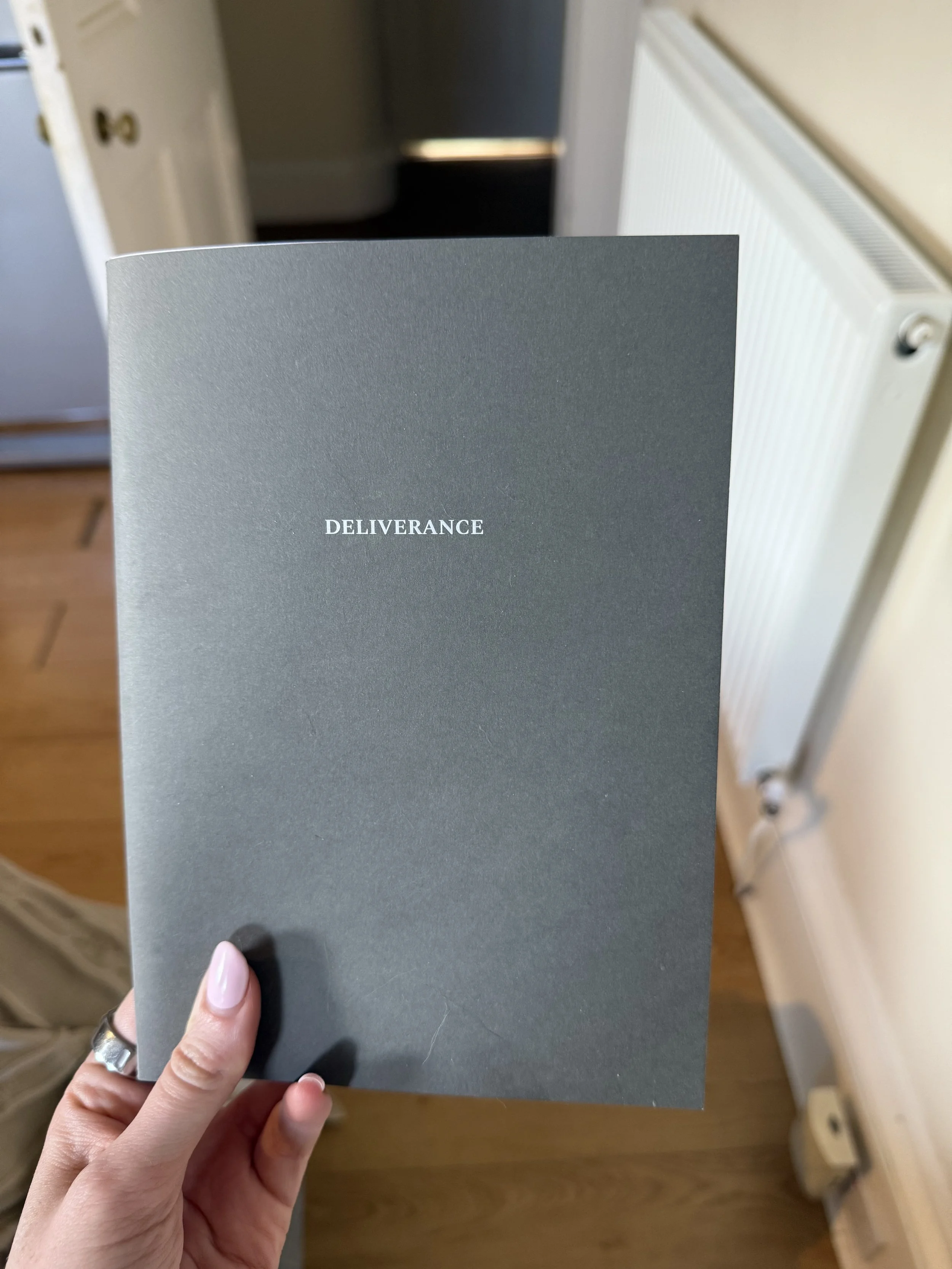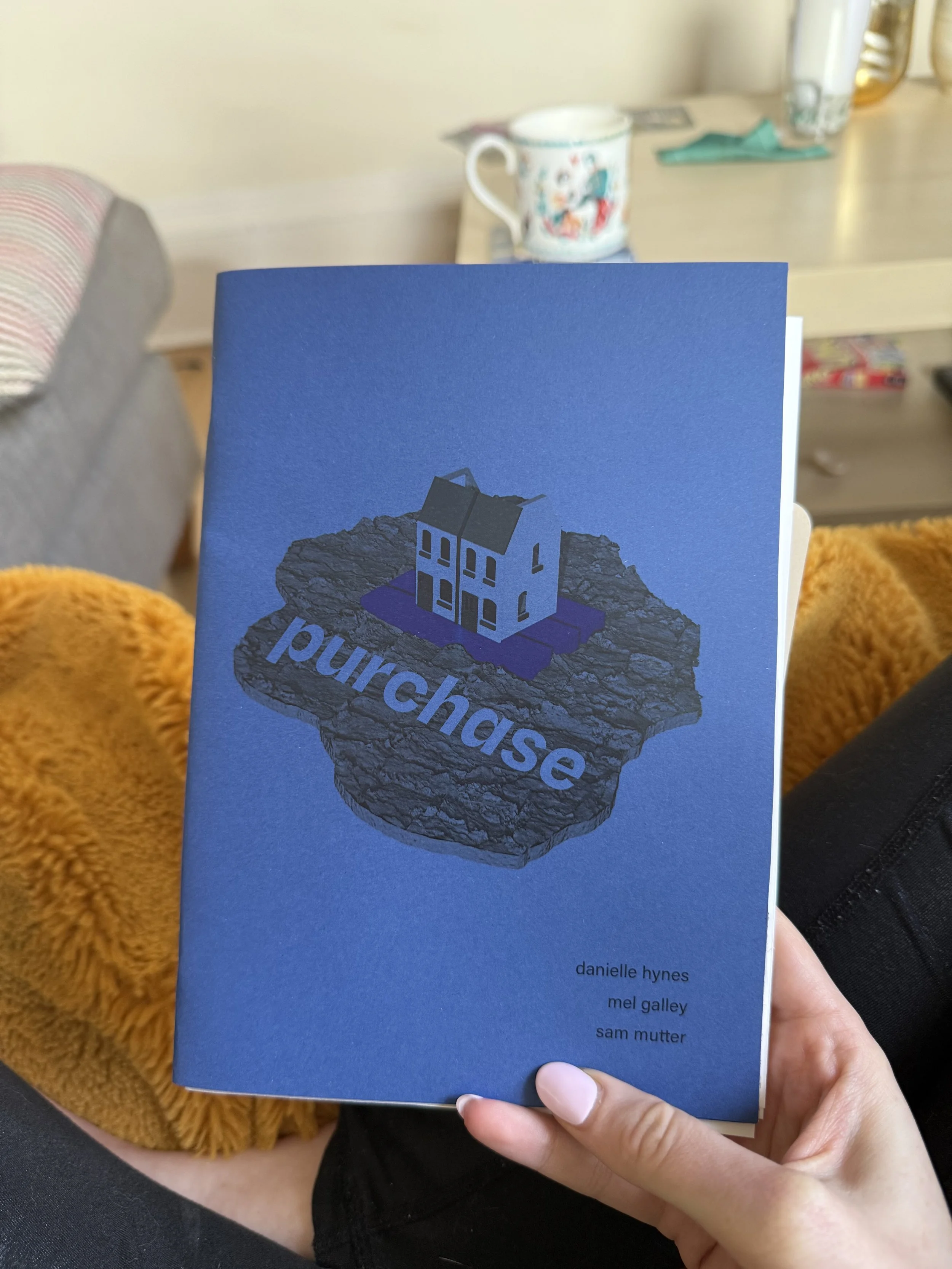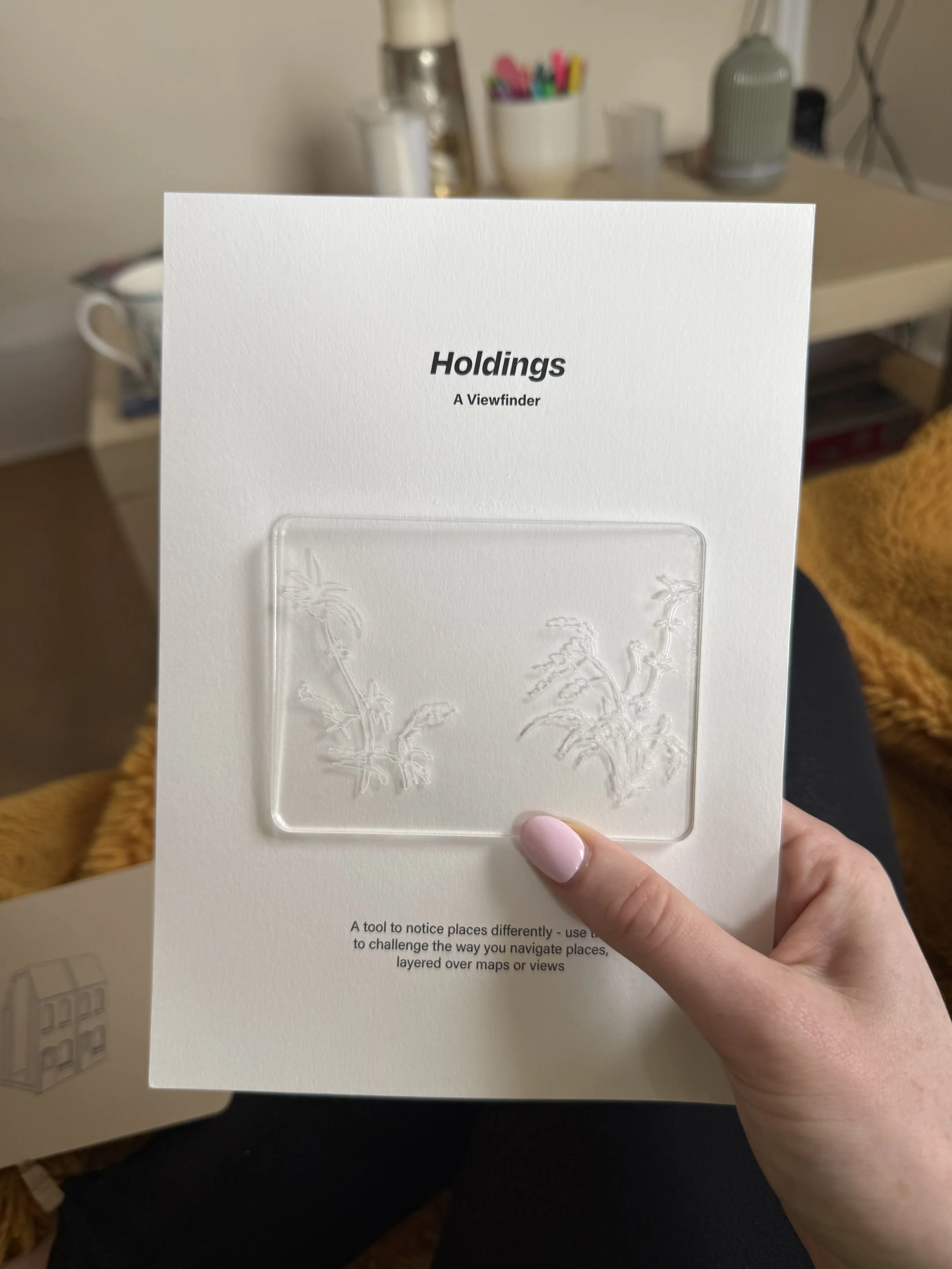Home-Specific Performance: “Deliverance” x “Holdings”
Lately, I have been wondering, What constitutes a site?
Pandemic performance, to me, highlighted the pleasure of experiencing performance at home. This is nothing new. Following the introduction of the television into the home, audiences must have ooh'ed and ahh'ed at The Beatles, live from their living rooms. With DVD rental services, like Blockbuster, movie goers revelled at a cinematic experience, available on-demand at any time. Then the rise of streaming services, like Netflix, made live television and movie-going a nostalgic novelty, providing users with seemingly unlimited amounts of content across a myriad of genres and forms.
And now, at-home performance continues through Kolbrún Björt Sigfúsdóttir's Deliverance (2020 - Present) and Clara McSweeny and Mel Galley's Holdings (2025), showing at Edinburgh Festival Fringe and Dublin Fringe respectively.
Both are performances that are delivered directly to your home. Both are primarily in the form of printed booklets-- a script that you, the audience, uses as your guide through the experience. Both interact with you via text message to initiate a phone call. Both are intended as individual experiences. Neither are digitally site-specific performances, but there is something within their respective interactive frameworks that reveal more about digitally site-specific theatre and the nature of site-based performance.
In his chapter from The Routledge Companion to Site-Specific Performance, Phil Smith writes that "our usual term" for site " is one that otherwise describes a location for constructive or destructive human activity: a 'building site' or a 'bomb site'" (2025, p. 56). In Deliverance and Holdings, the home is considered as such a 'site'.
In Deliverance, we are invited to look inward, which is easily done within the constructs that this 'site' imposes. Through the booklet provided and hand-delivered by a courier to our door, Sigfúsdóttir makes several requests of us within this space, including looking deeply into our bathroom mirror, searching through our own closets, or "somewhere in your home where you feel extra safe and happy" (Deliverance). In these spaces, we are asked to re-envision and re-imagine ourselves in the context of our own gender identity, self-expression, and self-intimacy. In our homes, we feel safe to do these activities, presumably because home is not only a place but a feeling as well.
The booklet that arrives via home delivery in Deliverance…
In Holdings, we are invited to look outward, beyond the confines and constructs of this place we may call 'home'. In the phone call consultation that begins the experience, we are asked a slew of questions about the future: How confident are you, on a scale from 1-10, that you will own your own home in the future? Do you imagine what this home could be like once a day, once a week, once a month, or once a year? Then, we are invited to investigate the printed materials delivered to us earlier and consider, What does the future hold? In our homes, we are invited to improve upon this space, whether it be temporary or semi-permanent. We are invited to envision a bold, bright future for ourselves without the worries of logistics or affordability.
Yet another booklet that arrives via home delivery (!) in Holdings…
Both performances entail a combination of an interactive, 1-to-1 phone call and a self-paced, individualised journey through printed materials. The phone calls are both fairly early on in the performance, but are by no means your first encounter with these respective pieces. In Holdings, for instance, you are sent a link, via text message, to a website landing page that introduces you to the central ideas of the piece-- housing, property ownership, the enormity of the housing crisis, what this means for the future. As you enter the website, you are asked to click a button to 'Book a Consultation'. You have 5 minutes to peruse the materials on the site before your expert consultation. In Deliverance, you are asked to draw a picture from your childhood. It could simply be a memory, or a recreation of a childhood photo-- whatever arises from your childhood. You are asked to consider what has changed for you since then. You are invited to write these answers in the booklet directly, or you can simply speak these aloud or think silently to yourself. You are asked to text a number whenever you are ready for a phone call. Both require your consent to truly begin the experience, and both leave you anxiously waiting for the phone call yet to come. In these small, perceivably imperceptible moments, an agreement is made, a confrontation initiated.
Citing various philosophers in her article on 'Home-Specific Performance', Bianca Mastrominico writes that "the house image would appear to have become the topography of our intimate being," and this 'territory' "by definition, cannot be the place of others" (2023, p. 425). Holdings directly addresses this notion of the home, inviting the audience member to consider their relationship to their current home, as well as their relationship to their 'home' yet to be. It positions the 'home' as a simultaneous state of mind and physical dwelling. Through its accompanied print materials, which includes a zine chock-full of surrealist episodic poetry across three different writers, it creates a liminal space-- a crevice in which the reader might allow themselves to simultaneously inhabit this state of being and this potential future physical space. Deliverance, on the other hand, carefully subverts these ideas by infiltrating the 'safe space' of the home: At several points, it tenderly reminds you, this is your time and I want you to be comfortable. At the same time, it encourages you to turn toward yourself, getting deeper and deeper into your interior life. What's changed about your relationship to your body, the ways in which you express yourself through clothing, makeup, jewellery, etc.? Have you noticed these changes? Accepted them?
One of many ‘takeaway’ gifts from Holdings. A viewfinder for seeing things differently…
Ultimately, both pieces successfully interrogate and subvert pre-existing notions of 'home' and, by consequence, 'safety'. Both constitute what Mastrominico would identify as 'Home-Specific Performance', as they make use of and exploit this site to communicate their respective messages. Though one of these works - at the very most - might be digitally-mediated, neither are digitally site-specific. However, both pieces say much about digitally site-specific theatre and notions of 'site': How might that moment of 'activation' or 'confrontation' manifest in other digitally site-specific works? How does this relate to our everyday understandings of consent in networked spaces (to share analytics, accept cookies, agree to terms and conditions, login, register a new profile, etc.)? Does performativity challenge these understandings, or flatten them further? Regarding site, where are these places of 'safety' in the digital sphere? Where is 'constructive or destructive human activity' in the context of digitally-networked publics? Addressing these questions might allow a consideration of those sites that are most salient or palpable to digitally site-specific audiences.
Both Deliverance and Holdings have concluded their runs at the Edinburgh Festival Fringe and Dublin Fringe Festival respectively. For more details on Deliverance, go here. For more details on Holdings, go here.
List of References
Deliverance by Kolbrún Björt Sigfúsdóttir (2025) [At Your Home. 10 Aug 2025]
Holdings by Clara McSweeny and Mell Galley (2025) [Your Place - By Post. 6 Sept 2025]
Mastrominico, B. (2023) "Home-specific performance and the digital staging of the domestic in Flanker Origami," International Journal of Performance Arts and Digital Media, 19:3, pp. 424-444, DOI: 10.1080/14794713.2023.2239693
Smith, P. (2025) "THREE-DIMENSIONAL METAPHOR: After 'Site'," in Hunter, V. & Turner, C. (eds) Routledge Companion to Site-Specific Performance. [Online]. Routledge.


